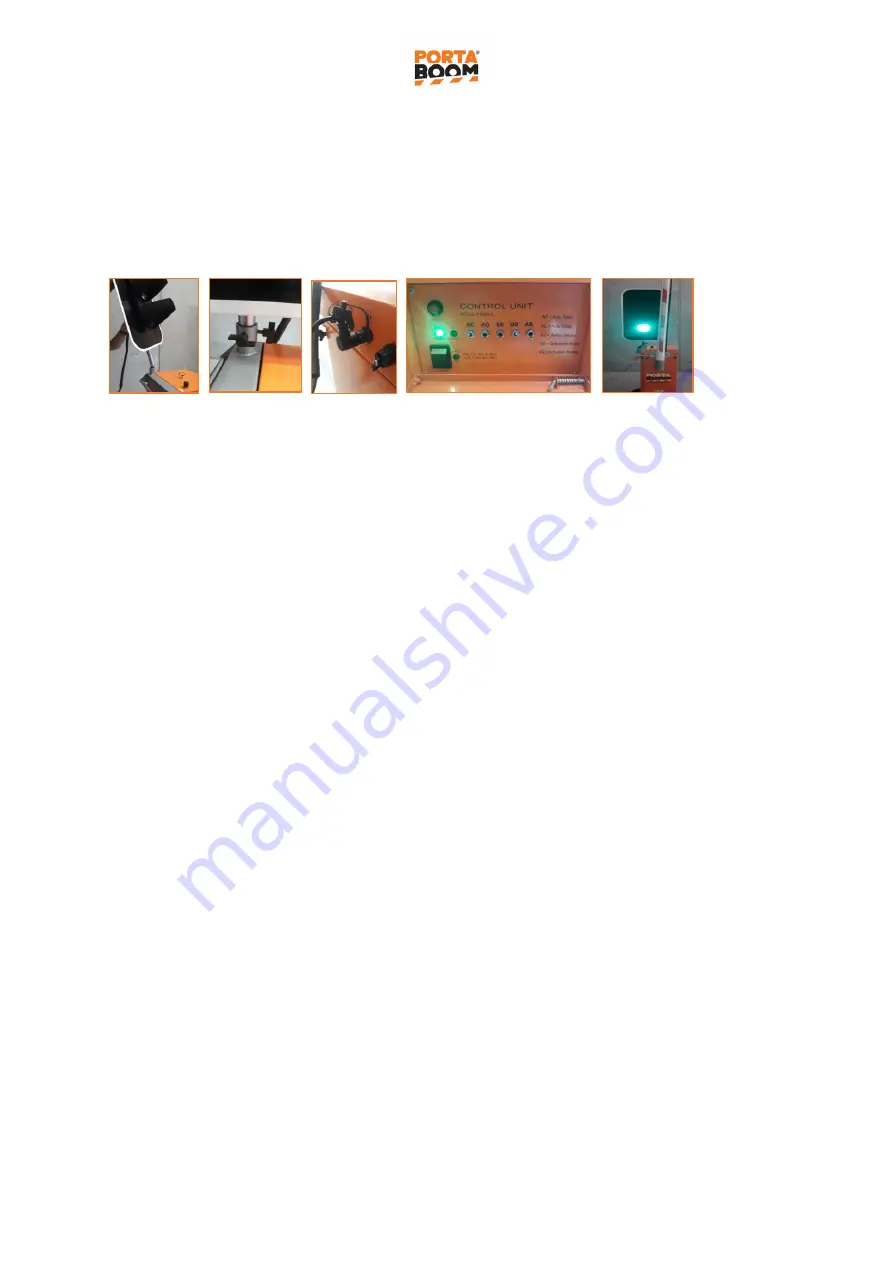
User Manual
THIS DOCUMENT IS UNCONTROLLED WHEN PRINTED
Page
17
of
34
7.
Accessories
7.1.
Traffic light
The traffic light accessory provides an additional visual feature to enhance safety by providing
further advanced warning for a motorist to prepare to stop.
STEP 1
–
Unpack the accessory and check components:
•
Check the condition of the accessory to ensure all components have been supplied.
•
Position the accessory in close proximity to the product.
STEP 2
–
Attach accessory to product:
•
Use the fitted handles to lift the accessory.
•
Insert accessory into adapter, position light to face the direction of traffic.
•
Align connection points and secure with wing bolts (minimum of two bolts to be fitted).
STEP 3
–
Connect accessory cable to port:
•
Ensure the product is turned off prior to connecting cable.
•
Line up pins and connect cable plug to the L1 port (primary).
•
The L2 port is secondary and operated opposite to the boom function.
•
Ensure plug is pushed in and fully connected.
STEP 4
–
Test operational sequence:
•
Access the control panel using the key and turn the product on.
•
The product will run a self-test, once complete the green power light will illuminate.
•
Test attachment in manual mode by pressing the red button and using the remote control.
•
Ensure the product is turned off prior to changing the mode.
STEP 5
–
Operating the traffic light:
•
Ensure the product is turned off prior to switching between modes.
•
Refer to section 4.1 for information on the modes and select.
•
If the boom is not required, switch deactivate boom (DB) off and detach it from the product.
•
If intending to use the automatic cycle, switch auto open (AO) on.
•
If other accessories are being used simultaneously, connect them and switch on.
•
Turn the product on, self-testing will identify modes and attachments.
•
A flashing light will activate on the back of the traffic light when the light is red.
•
Automatic cycles can be overridden by the manual button or remote controls.
















































